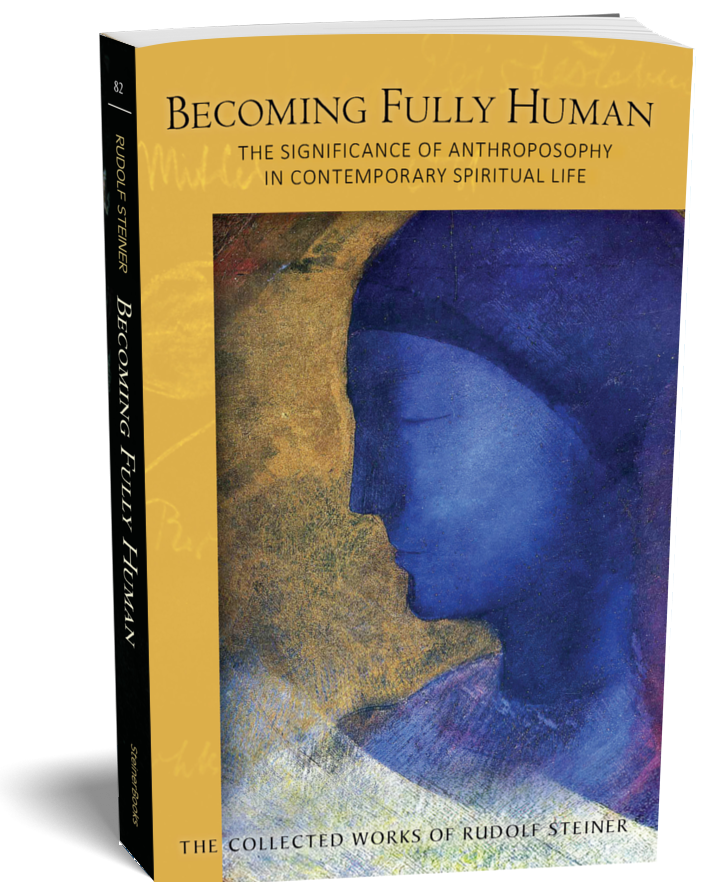When daisies pied and violets blue
And lady-smocks all silver-white
And cuckoo-buds of yellow hue
Do paint the meadows with delight,
The cuckoo then, on every tree,
Mocks married men; for thus sings he:
Cuckoo;
Cuckoo, cuckoo! O, word of fear,
Unpleasing to a married ear!
When shepherds pipe on oaten straws,
And merry larks are ploughmen's clocks,
When turtles tread, and rooks, and daws,
And maidens bleach their summer smocks,
The cuckoo then, on every tree,
Mocks married men; for thus sings he,
Cuckoo;
Cuckoo, cuckoo! O, word of fear,
Unpleasing to a married ear!
—Wm. Shakespeare, "Song: Spring" (from Love's Labors Lost)
Back in Stock
The Christian Mystery
Rudolf Steiner
In this major collection, Rudolf Steiner affirms the reality of esoteric Christianity and unveils many of its secret teachings. His lectures are on the significance of the Mystery of Golgotha and of the Blood that flowed on the Cross; the relationship of Christ and Lucifer (or Love and Knowledge); the various paths of initiation, including the Christian-Gnostic and Rosicrucian Paths; and Steiner’s early interpretations of St. John’s gospel and the sermon on the mount. All of Steiner’s lectures on the Lord’s Prayer are also included, as well as the version of the prayer that Steiner himself prayed throughout his life.
The Secrets of Metals
Rudolf Steiner
Here is a classic text for deeper understanding metals as a whole, as well as gaining a fuller appreciation of spiritual scientific research methods in relation to the world we inhabit.
In The Secrets of Metals, Wilhelm Pelikan—in the light of spiritual science—discusses the significance of the classic "seven metals" and their importance for humankind as well as for nature as a whole and the Earth. He also discusses the "newer" metals as well as the virtually unknown "radiation effects” of metals—the effects of which Rudolf Steiner used therapeutically. Pelikan's method here is a phenomenological one, in which he helps us try to see natural objects in the Goethean sense, as developed by Rudolf Steiner.
Foundations of Waldorf Education
The Genius of Language
Rudolf Steiner demonstrates how history and psychology together form the different languages and how ideas, images, and vocabulary travel through time within various cultural streams. READ MORE
Waldorf Education and Anthroposophy: Volume 1
This is the first of two previously untranslated volumes of Rudolf Steiner's public lectures on Waldorf education. Readers familiar with Steiner's lectures for teachers will discover here how Steiner presented his ideas to the general public with surprising directness. READ MORE
Waldorf Education and Anthroposophy: Volume 2
The Waldorf school movement was gaining increasing recognition by the time these public lectures took place. As in the previous volume, Rudolf Steiner is outspoken about the spiritual nature of human beings and the world—including the spiritual nature of Waldorf education. READ MORE
New for Children
The Bumblebee Garden
Dawn Casey and Stella Lim
A charming, lyrical story that teaches young children about the life cycle of bees and their importance to the balance of the natural world. The luminous illustrations will inspire readers to celebrate these remarkable, vital insects and help them thrive in their own gardens and nearby green spaces.
READ MORE | SEE INSIDE
Also by Dawn Casey and Stella Lim
Spin a Scarf of Sunshine
A story that encourages young children to engage with the wool cycle and understand the basics of traditional crafts of natural spinning, dyeing, knitting, and gardening. The luminous illustrations of the natural world will inspire children and adults alike to explore the simple beauty around them and connect them to the idea of sustainable living and knowing where our clothing comes from.
READ MORE | SEE INSIDE
From the Collected Works of Rudolf Steiner
Becoming Fully Human
The Significance of Anthroposophy in Contemporary Spiritual Life
6 lectures at The Hague, April 7–12, 1922;
A written report by Rudolf Steiner on the course (CW 82)
READ MORE | CONTENTS
In the case of the time organism, it is such that, although we have a later and an earlier, later and earlier are connected in an organic way. It can be characterized like this: Let’s say we have a very old person. We find that when this person speaks to younger people, to children, for example, her opinions bounce off the children, her words mean nothing to the children. And yet we find with another elderly person, that when she speaks to children, it is something completely different. Her words flow naturally into the children’s souls. If you study this . . . you can observe, for example, how the strength of blessing that an older person can have stems from his or her early childhood. Observation is not extended that far today. Anthroposophy has to do that. There, when you go back, you will find that those who can bless in old age, who in old age have this peculiar spiritual power in them—namely, that their words flow into young people like a blessing—have learned to pray in youth. I would like to express it figuratively with the words: Folded hands in youth become blessing hands in old age.
—Rudolf Steiner, from a question & answer session, April 12, 1922, in
Becoming Fully Human: The Significance of Anthroposophy in Contemporary
Spiritual Life (CW 82)
SteinerBooks / Anthroposophic Press, Inc. is an independent 501 (c) 3,
not-for-profit publishing company. Click above to make a tax-deductible donation.









